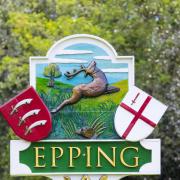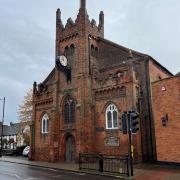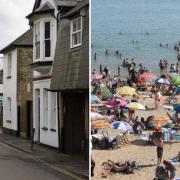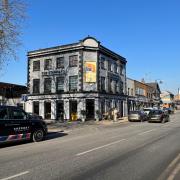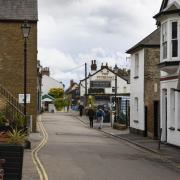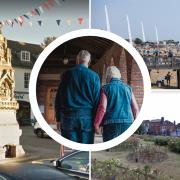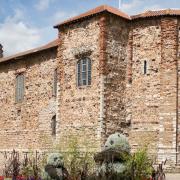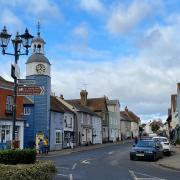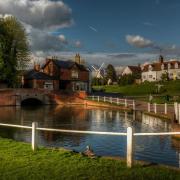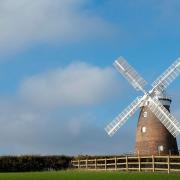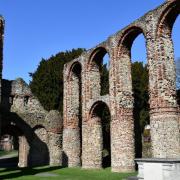Essex is a county rich in pretty countryside, thriving communities and buildings that reflect its heritage from wealthy manors and castles to industrial landmarks. The market town of Saffron Walden encapsulates all of these elements and Petra Hornsby learns what makes it a great place to live in, and to visit too
Saffron Walden is situated in between two major towns in neighbouring counties; 12 miles north of Bishop’s Stortford in Hertfordshire and 18 miles south of Cambridge. Nestled in the Cam Valley and surrounded by scenic countryside, the town boasts a history that appears to date back to the Iron Age and there are signs that a Roman fort existed on the west side of the river along with a settlement.
Anglo-Saxon and Viking treasures that have been unearthed from burial grounds and cemeteries confirm the area’s suitability as a settlement, but it was probably after the Norman Conquest that the town began to take shape and grow.
A hill-top overlooking the Roman settlement seemed to be the perfect spot for Geoffrey de Mandeville, first Earl of Essex, to build Walden Castle which was constructed around 1140. He also founded Walden Abbey and was a major contributor to the relocation of a market from Newport to Walden in 1141. An official charter was granted in 1295 for a Tuesday market and that still stands today, along with an additional market day each Saturday.
Mandeville’s stay in the castle was short-lived and it now lies in ruins with just the remains of the flint tower visible. It is clear that its existence, however, helped to shape the town that grew beyond the large outer bailey that circled the hill-top site. The town’s boundaries were marked by what are referred to as The Battle Ditches, still identifiable at the south-west corner south of Abbey Lane.
Mandeville clearly had great plans for Chepyng (market) Walden, as did his successors the Bohuns, who inherited the earldom in the 13th century. The town flourished, with its very large market place filled with rows of buildings to replace the market stalls. Mercers, butcher and market rows are in evidence even today and on Cross Street, examples of Tudor buildings can be seen with shop windows that would open as canopies to protect the produce and wares on offer.
During medieval times, the town’s main industry was based on the processing of wool and in the 16th and 17th centuries, the successful cultivation of the saffron crocus would give the town its unique name. Good soil and a sympathetic climate were a great combination for the plant whose coloured stigma was used in medicines, dye, condiments, perfume and even as an aphrodisiac.
By the end of the 18th century, demand for the crocus had dwindled so new crops, albeit less lucrative, were introduced, including malt. At a peak, there were more than 40 maltings in the town.
During the 19th century, the Quakers had a strong influence on the town and one family in particular, the Gibsons who were famous as one of the founders of Barclays Bank, funded the construction of important buildings in the town centre that are still in use today, including the museum and the Town Hall.
The town today serves its population of more than 14,000 well. In addition to the market, which offers several stalls selling fresh food, clothes, plants and household goods, there is a fine selection of independent shops, pubs, cafes and restaurants. The beautiful parish church, St Mary’s, is considered to be one of the finest in the county and has a spire that soars to an impressive 193 feet.
Other facilities include a good choice of schools including the Saffron Walden County High School, a community cinema (the Saffron Screen) and an impressive performing arts venue, Saffron Hall, built in the grounds of the high school. This multi-million pound venue opened in 2013 and is a product of a partnership between the high school and the Yellow Car Charitable Trust and is believed to be the largest gift of this kind given to a school. There is even a world class skate park, built in 2007, which is frequented by skaters from all over the county and even Europe.
Mark Starte, duty manager of the Saffron Walden Tourist Information Centre, knows the town very well. He explains: ‘Saffron Walden is a typical English market town which offers residents and visitors an attractive and safe environment in which to live and work. Whether you are a visitor or a resident, you will find there is plenty to do. Take a walk around the attractive streets and see the pretty timbered buildings and examples of pargetting (elaborate moulded plasterwork) which can be seen on the Old Sun Inn and houses in Castle Street and Bridge Street. Or just sit on the Common, the oldest of Saffron Walden’s open spaces with the largest turf labyrinth still surviving in Europe, and admire the view of one of England’s most attractive towns.’
The Words in Walden literary festival is a very popular event that takes place in various venues across the town in both the spring and the autumn. Shirley Williams, John McCarthy and Barry Norman are a few of the headlining names who have appeared.
Of course, all the locals can enjoy the many choices that tempt visitors to the town and high on the list is the charming Fry Art Gallery. The gallery was originally built to house the art collection of Francis Gibson, later inherited by his daughter Elizabeth Fry, and became known for regularly displaying the works of the 1930s group known as the Great Bardfield Artists, two of which included Edward Bawden and Eric Ravillious.
The Saffron Walden Museum was opened in 1835 and holds an impressive collection of human and natural history artefacts from north-west Essex and from other countries as well. The museum is a perfect family-friendly size and organises a programme of events and activities throughout the year. For additional interest, the castle ruins sit in the grounds of the museum. The whole family will enjoy a visit to the charming and tranquil Bridge End Gardens. Originally designed by the Gibson family in the 19th century, they feature seven interlinked areas that have been carefully restored using techniques typical of the Victorian era. Children will love the clipped hedge maze and there is a sunken garden of box geometric swirls based on a drawing by Gertrude Jekyll, the famous Edwardian landscape architect. There is also a wilderness area and a walled garden that has a range of Victorian fruit trees and rhubarb. The gardens are Grade II listed and open to the public every day. Audley End House and Gardens is yet another great attraction offering an intriguing insight into life in an aristocratic house, both above and below stairs. As well as exploring the splendid mansion house, visitors can meet the staff and see them at work in the Victorian service wing and nursery from May to September. The grounds house a magnificent kitchen garden and a ‘Capability’ Brown landscaped parkland.




